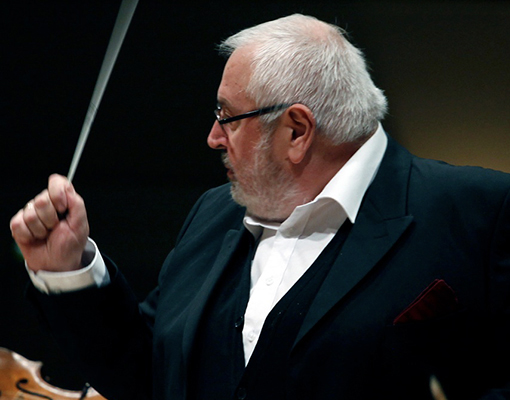by Daniel Hathaway

That fiddle, on which Auer was scheduled to play the premiere of the Tchaikovsky Concerto but didn’t, is on permanent loan to Gluzman from The Stradivari Society. He demonstrated its powerful upper register and its robust lower tones on Friday, May 3 at Severance Hall in a performance with The Cleveland Orchestra under Michail Jurowski that combined edge-of-the-seat daring with ravishing beauty.
Although soloist and orchestra were not always perfectly in sync during fast passages, Gluzman’s performance penetrated the core of Tchaikovsky’s heart-rending music, and obviously moved the large audience — who insisted on applauding between movements. Who could blame them? (And there’s some historical performance practice to back them up on that count.) After several callbacks, Gluzman serenaded the crowd with a perfectly-controlled Bach Sarabande.

The Symphony alternates bleak, static music — sometimes played by strings in four octaves — with fearsome depictions of confrontations between peasants and Czarist guards highlighted by persistent rhythmic figures from the percussion. Relief comes at one point in the form of a lengthy English horn solo, poignantly played by Robert Walters, but the Symphony ends in conflict with deafening strokes on big bells.
Jurowski, making his long-delayed American debut, led the Symphony with the authority of a musician who knew Shostakovich personally — which he did — and inherently understands the composer’s frequently unfathomable complexities.
Gluzman photo by Roger Mastroianni from an earlier performance.
Published on ClevelandClassical.com May 14, 2019.
Click here for a printable copy of this article



